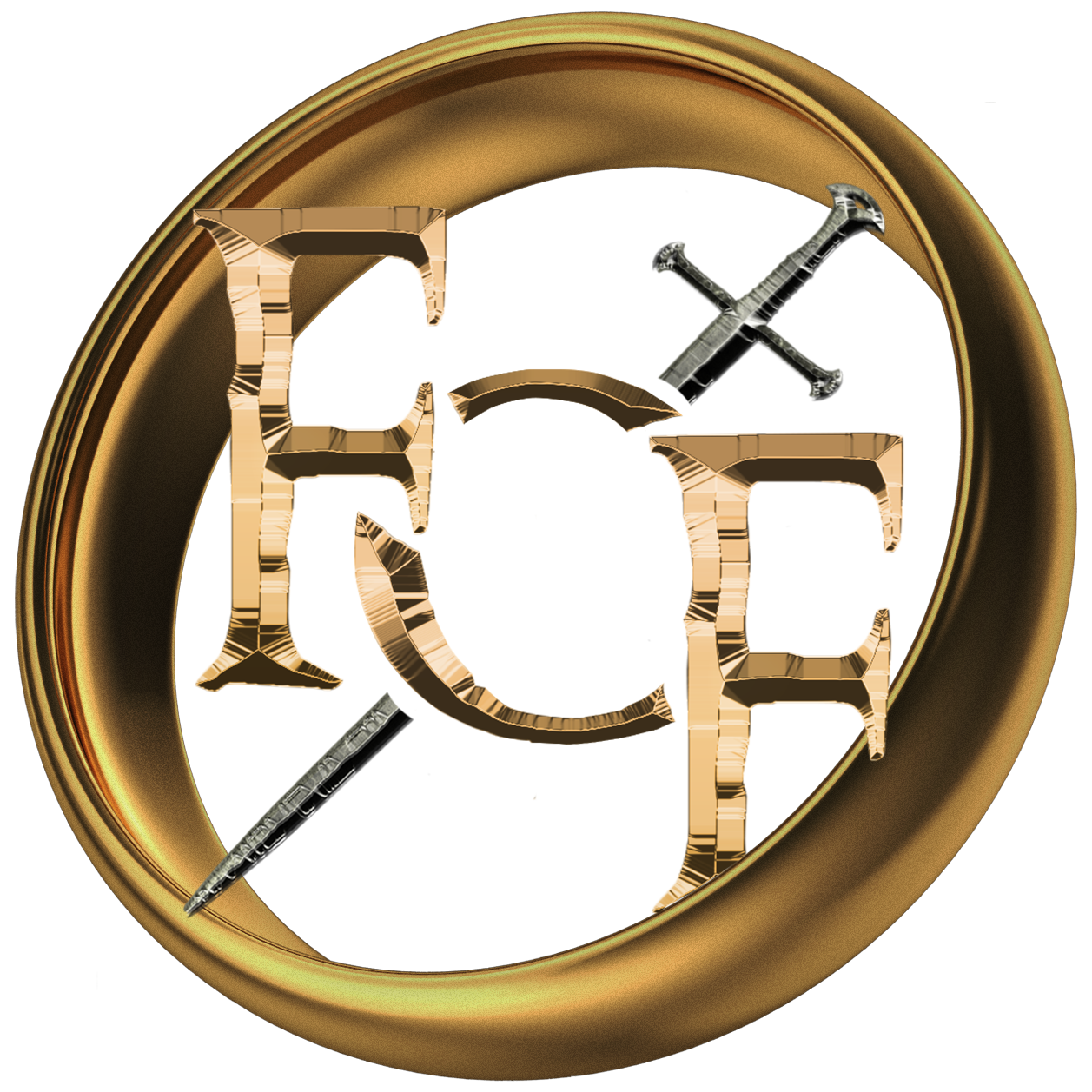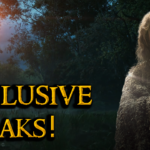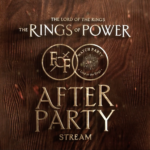
An Introduction to the Second Age
Amazon Prime Video has recently announced the schedule for the release of episodes of The Lord of the Rings: The Rings of Power. The worldwide premiere of the series will take place on September 1st at 9:00 PM EDT (Eastern United States), which is September 2nd at 2:00 AM BST (United Kingdom). Subsequent episodes will be released weekly on Fridays at 12:00 AM EDT, which is 5:00 AM BST. There are eight episodes in total, so Season 1 will conclude on October 14th, around the same time as production of Season 2 begins in England. With two weeks and two days left to go, Amazon has begun showing the first two episodes in select theaters across the globe, beginning at Amazon Studios’ headquarters in Culver City, California. (Do not expect a general theatrical release, as the film rights currently reside with Warner Bros.)
Amazon has ramped up its marketing efforts over the past few months in an effort to spread awareness of the series far beyond the core group of enthusiastic Tolkien fans who have been impatiently following news, press releases, and leaks for years in an effort to glean as much information as possible about the show. With all the teasers, trailers, video spots, interviews, articles, and so on, we now know far more about the show than we did even two or three months ago. However, despite this, many questions remain about the story Amazon is going to tell, even among long-time Tolkien fans who have been following news about the production for years. Those who are less familiar with the lore, or with what Amazon has been up to, will have even more questions. For this reason I have decided to write an introduction (hopefully not too exhaustive) to the Second Age, the period of time in which The Rings of Power is set. After reading this, if you wish to know more, you may want to take a look at my lists of places and people from the Second Age.
The Legendarium
Tolkien’s Legendarium is a mythical history of our Earth (or at least part of it) that takes place over a span of several thousand years, divided into ages. Of these ages, the stories Tolkien wrote took place mostly in either the First Age or the Third Age. Most of The Silmarillion (the first set of stories Tolkien began composing in his Legendarium) takes place during the First Age. The Hobbit and The Lord of the Rings (two stories Tolkien composed later, but for which he is most famous) both take place near the end of the Third Age. Compared to those two ages, Tolkien wrote relatively little about the Second Age. Apart perhaps, from the story of Númenor, the Second Age exists largely as the backstory to The Lord of the Rings. It tells the story of the origin of the Rings of Power that featured in The Lord of the Rings. These two stories―the story of the creation of the Rings of Power and the story of the island kingdom of Númenor―are the two principal story lines of the Second Age. These stories exist primarily in the form of chronologies, essays, notes, expository dialog within The Lord of the Rings, and even a poem. There are very few extended narratives that take place in the Second Age, and not much dialog. For the sources of Second Age lore, please see the section titled Sources of the Second Age below. As with other posts I have made about the Second Age in the run up to the show, this post is based mostly on the writings of J.R.R. Tolkien, rather than on still fragmentary information about Amazon’s show. I will try to avoid spoilers about the Second Age itself, but may assume that the reader is familiar with The Hobbit and The Lord of the Rings (the films, at least), and doesn’t mind spoilers for the First Age. (Those who do mind should read The Silmarillion first.)
Before the Second Age
Tolkien divided the history of Arda (our Earth in a mythical or crypto-historical past) into various time periods separated by certain major events: the Years of the Lamps, the Years of the Trees, and the Years of the Sun; and the First Age, the Second Age, the Third Age, and the Fourth Age.
Before the creation of Arda, its creator, Eru Ilúvatar (understood by Tolkien as the Judeo-Christian God) revealed his plan to the Ainur, beings of spirit who served him. The Ainur were divided into greater beings, the Valar, and lesser beings, the Maiar. One of the greatest of the Valar was called Melkor. However, Melkor rebelled and sought to destroy the plan of Eru and the works of the Valar. Some of the Maiar followed him, including one called Mairon, who is quite important to the story of the Second Age.
During the Years of the Lamps, Arda was illuminated by two great lamps on towers in the north and south of Middle-earth, the great central continent. Melkor toppled the lamps, putting out the lights. The Valar created a new continent, Aman, upon which they lived in the realm of Valinor.
The Valar then created two trees, one with golden light, and one with silver light, to illuminate the continent of Aman, but Middle-earth remained in perpetual starlight. These were the Years of the Trees. During this time the Elves awoke in the far east of Middle-earth, which began the First Age (although some Tolkien fans reckon the First Age from the beginning of the Years of the Sun). Some Elves were captured by Melkor and twisted to his purposes. When the Valar discovered that the Elves had awoken, they decided it was time to make war upon Melkor for their sake. They were victorious and took Melkor captive to Valinor. They also invited the Elves to come to Valinor. Some (called the Avari) refused. The rest of the Elves came in three groups: the Vanyar, the Ñoldor, and the Teleri. The first two groups made it largely intact to Valinor, but some of the second group stayed behind in the region of Beleriand in northwest Middle-earth, becoming the Sindar. In Valinor the Elves prospered. However, Melkor seemed to be repentant, and was eventually set free. Melkor began corrupting the Ñoldor, persuading them to forge weapons. The greatest of the Ñoldor craftsmen was called Fëanor. He made three jewels, called Silmarils, to catch the light of the Trees. Melkor allied with a creature of darkness in the form of a spider, Ungoliant, to destroy the two trees. He also slew Finwë, Fëanor’s father, and stole the Silmarils. Fëanor and his sons swore a terrible oath to make war without rest on anyone who possessed a Silmaril, who was not of Fëanor’s house. This oath led to three kinslayings, or massacres of other Elves.
Before the Two Trees fully died, the Valar were able to rescue a flower from one and a fruit from another, which became the Moon and the Sun. Thus began the Years of the Sun. The Ñoldor left Valinor and returned to Middle-earth to fight for hundreds of years against Melkor, whom Fëanor had renamed “Morgoth” (“Dark Enemy”). However, it wasn’t until the half-Elf Eärendil appealed to the Valar for aid that Morgoth was defeated. This War of Wrath came at a high cost, however: the entire region of Beleriand was sunk under the sea, with only a small part remaining west of the Blue Mountains, as well as a few highland areas that became islands. Morgoth was chained and cast into the Void, and his surviving forces (orcs, trolls, dragons, balrogs, and some Men) were scattered to the east.
Events of the Second Age
Following are some of the major events and situations of the Second Age, which Amazon may use as a basis for their series. I have attempted to give the major points without including any spoilers (for the Second Age, anyway):
The First Age ended with the War of Wrath. The Maia who had been called Mairon was now known as Gorthaur, or Sauron, by the Elves, and he had been Morgoth’s lieutenant during the First Age. Nevertheless, he repented of his evil deeds out of fear of the Valar’s wrath, and was ordered to go to Valinor to await judgment. However, he was unwilling to submit to such humiliation, and instead of going to Valinor he hid himself in Middle-earth. With Morgoth and his servants dead or scattered, the early Second Age was a period of peace in which it was believed that the Shadow had been finally vanquished.
The forces fighting on the side of the Valar consisted mostly of Elves and Men (not to mention half-Elves). The Elves who had fought against Morgoth were permitted to go West to live on the island of Tol Eressëa, within sight of Valinor. Many Elves chose to go West, but some decided to remain in Middle-earth. Those who remained in Middle-earth mostly lived in Lindon at first, under Gil-galad, High King of the Ñoldor. Lindon is the part of Beleriand west of the Blue Mountains that still remained above the sea.
About 32 years after the end of the War of Wrath, the Edain, the Men who fought on the side of the Valar in the war, were given the island of Númenor to live in, in the middle of the sea. There they were visited by Elves from Tol Eressëa, but they themselves were not permitted to sail westward out of sight of Númenor. This was to prevent them from sailing to Aman, the Undying Lands, since mortality was their lot. Nevertheless, they were granted exceptionally long life, up to 500 years.
To Elrond and Elros, the half-Elven sons of Eärendil, was given the choice to live as Elves or Men. Elrond chose to live as an Elf, serving as Gil-galad’s herald in Lindon. Elros chose to live as a Man, and led the Edain to Númenor, where he became Tar-Minyatur, the first king of Númenor, and lived for 500 years, the longest of any of the rulers of Númenor.
Some of the Sindar preferred not to be ruled by a Ñoldo king, and left Lindon. Some of these sailed to Edhellond, an Elven haven on the coast of what would become Gondor. Others settled in Lórinand (Lothlórien), or in the Woodland Realm across the Anduin River to the east.
Celeborn (a Sinda in most accounts) and Galadriel (a Ñoldo born in Valinor) initially lived in Harlindon (south Lindon) according to some accounts. They later crossed the Blue Mountains into Eriador, where they lived by Lake Nenuial.
Many Dwarves lived in the Blue Mountains during the First Age. Their two great underground cities were ruined during the War of Wrath, and in the Second Age many of them traveled southeast to Khazad-dûm (or Moria), where they added to its number and greatness.
Meanwhile, Sauron was in the East working among the Men there, teaching them knowledge and skills, and seeking to establish order among them. Whether or not his initial motive was to benefit the Men of the East, he had little tolerance for ideas that departed from his own, and he soon fell into his old methods of implementing his vision through intimidation, fear, treachery, and so on.
After about 600 years of isolation the Númenóreans sailed northeast to Lindon. They began sailing around the coast of Middle-earth from north to south, and learned of a growing Shadow in the East. Gil-galad recognized this Shadow as a servant of Morgoth and sought an alliance with Númenor to guard against it.
Drawn by the lure of mithril, many of the Ñoldor Elves, as well as some of the Sindar, left Lindon to found a new settlement near Khazad-dûm, called Eregion (or Hollin). There they were on friendly terms with the Dwarves and created many fine works. Celeborn and Galadriel were among them, as well as the great Elven craftsman, Celebrimbor. The Dwarves and the Ñoldor, in particular, were united by their love of fine craftsmanship, but Galadriel also considered the Dwarves a potential ally against the Orcs.
As the Númenóreans began exploring the coasts of Middle-earth and establishing settlements (initially led by Vëantur and his grandson Tar-Aldarion, who became king of Númenor), and with Elves pushing south and east beyond the borders of Lindon, Sauron decided to establish a base closer to the people he considered the greatest threats to his power. That base was the land of Mordor.
Aided by a powerful craftsman named Annatar (or Aulendil, or Artano), the Elves of Eregion began experimenting to create rings with magic powers. Their object was to slow the decay of Middle-earth and preserve it as a paradise similar to the one some of them had known in Valinor.
It’s difficult to go beyond this point without getting into spoilers, but the creation of the Rings of Power (and in particular the Three Elven Rings and the One Ring forged by Sauron), led to war between Sauron and the Elves, and the ensuing Dark Years, which ended the years of peace. During this time the settlements of Rivendell and Bree were founded, the Ringwraiths appeared (Men who through use of Rings of Power became wraiths enslaved to Sauron), and Númenor continued to expand its power and settlements in Middle-earth, eventually coming into conflict with Sauron.
This conflict led to the founding of the kingdoms of Arnor and Gondor by Númenóreans. These kingdoms, together with Lindon and the other Elven realms, formed the Last Alliance of Elves and Men, which waged a war against the forces of Sauron that was briefly depicted in the prologue to Peter Jackson’s The Fellowship of the Ring. The end of this war led into the Third Age, setting the stage for the events of The Hobbit and The Lord of the Rings, which take place nearly three thousand years later.
In Tolkien’s timeline the Second Age lasts for 3441 years, with long gaps between major events. The forging of the Rings of Power takes place in the middle of the Second Age, whereas the Last Alliance takes place at the end of the Age. Nevertheless, in Amazon’s show they are compressed so that they are contemporary. In Tolkien’s timeline, Isildur was born over sixteen hundred years after the forging of the One Ring, yet in the show he appears before the Rings of Power have even been forged. From fans’ discussions with the showrunners, it appears that Amazon is retaining about a millennium of “relative peace” at the beginning of the Second Age, and then compressing the rest of the events of the Second Age (the “Dark Years”) into a single human lifetime in the show.
Sources of the Second Age
During his lifetime Tolkien did not publish any works specifically set in the Second Age, and in fact, none of his posthumously published works are specifically about the Second Age either. With the possible exception of his tale of Númenor (the first version, anyway), Tolkien developed the Second Age entirely as a backstory for The Hobbit and The Lord of the Rings, and a bridge to them from The Silmarillion, which was then set in the “First Age”.
This backstory is sprinkled throughout the narrative of The Lord of the Rings (concentrated particularly in such exposition-heavy chapters as “The Shadow of the Past” and “The Council of Elrond”), and further expanded upon in the book’s appendices. The appendices most directly relevant to Second Age are Appendix A (“Annals of the Kings and Rulers”), part I (“The Númenórean Kings”), and Appendix B (“The Tale of Years”). Both appendices contain brief narratives of events in the Second Age, with Appendix A focusing more on Númenor and Appendix B focusing more on the Rings of Power. Appendix B also contains a timeline of the Second Age.
The Silmarillion, as published by Christopher Tolkien after his father’s death, contains two parts devoted wholly or partly to the Second Age. Part IV – “The Akallabêth” tells the story of Númenor, focusing largely on the later Second Age. Part V – “Of the Rings of Power and the Third Age” tells the story of the Rings of Power during both the Second and Third Ages.
Unfinished Tales of Númenor and Middle-earth, also published posthumously, contains four “tales” in “Part Two: The Second Age”. These are “A Description of the Island of Númenor”, “Aldarion and Erendis: The Mariner’s Wife”, “The Line of Elros: Kings of Númenor”, and “The History of Galadriel and Celeborn”. In fact, “Aldarion and Erendis: The Mariner’s Wife” is Tolkien’s only true narrative story set in the Second Age (unless one counts the brief and fragmentary “Tal-Elmar”), and it is, unfortunately, unfinished. Of the other three “tales”, “A Description of the Island of Númenor” is just what its title implies, and both “The Line of Elros: Kings of Númenor” and “The History of Galadriel and Celeborn” are more like brief histories than tales. “The History of Galadriel and Celeborn” is particularly notable in that it includes several different and somewhat contradictory versions of the history of Galadriel and Celeborn during the Second Age. Unfinished Tales is also notable because it includes a map of Númenor. That map apparently served as the basis for Númenor in Amazon’s map of the Second Age, released in March 2019, which suggests that Amazon has the ability to use Unfinished Tales, at least on an as-needed basis, and with the approval of the Tolkien Estate.
Other of Tolkien’s writings about the Second Age may be found scattered throughout the twelve-volume History of Middle-earth, which is a collection of Tolkien’s various notes and drafts that he wrote while creating The Lord of the Rings and The Silmarillion, as well as some of his later writings about Middle-earth. The volumes most relevant to the Second Age are The Lost Road and Other Writings (Part I), Sauron Defeated (Parts II and III), and The Peoples of Middle-earth, particularly the following chapters: “The History of the Akallabêth”, “The Tale of Years of the Second Age”, “Of Dwarves and Men”, “Last Writings”, and “Tal-Elmar”.
Also, The Letters of J.R.R. Tolkien occasionally contain references to the Second Age, particularly Letter 131 to Milton Waldman.
Finally, the upcoming book, The Fall of Númenor, will likely contain many of the above sources in one handy volume of lore about the Second Age. It is due to be published on November 10th, after the first season of The Rings of Power has aired.
Note that most, if not all, of the above-mentioned works (including The Lord of the Rings and The Silmarillion) contain what might be considered “spoilers” for the Amazon series.




No Comments